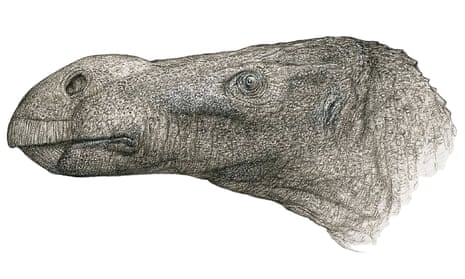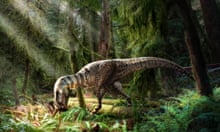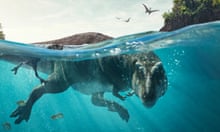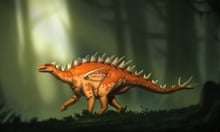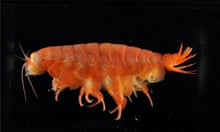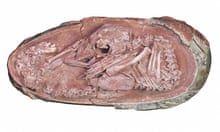A new species of dinosaur with an extremely large nose has been identified by a retired GP who spent lockdown rummaging through boxes of ancient bones.
Jeremy Lockwood, who is studying for a PhD at the University of Portsmouth, set himself the task of cataloguing every iguanodon bone discovered on the Isle of Wight. As he sorted the bones from the collections of the Natural History Museum in London and the Dinosaur Isle museum on the Isle of Wight, he discovered a specimen with a unique “bulbous” nasal bone.
“For over 100 years, we’d only seen two types of dinosaur on the Isle of Wight – the plant-eating Iguanodon bernissartensis and Mantellisaurus atherfieldensis,” he said. “I was convinced that subtle differences between bones would reveal a new species, so I set out to measure, photograph and study the anatomy of each bone.”
After four years of unpacking and studying boxes of bones, he began reconstructing the skull of a specimen that had been in storage since 1978 and found several striking features that set it apart.
“The number of teeth was a sign,” Lockwood said. “Mantellisaurus has 23 or 24, but this has 28. It also had a bulbous nose, whereas the other species have very straight noses. Altogether, these and other small differences made it very obviously a new species.”
He added: “This discovery made it one of the happiest days of lockdown.”
The herbivorous dinosaur was about eight metres in length and weighed about 900kg.
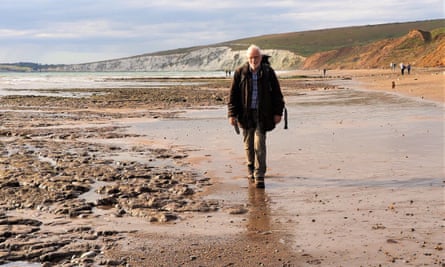
Lockwood, working with Prof David Martill from the University of Portsmouth, and Dr Susannah Maidment, from the Natural History Museum, has named the new species Brighstoneus simmondsi, for a study published in the Journal of Systematic Palaeontology.
Brighstoneus is named after the village of Brighstone on the Isle of Wight, which is close to the excavation site, and the latter part of the name is in honour of Keith Simmonds, an amateur collector, who was involved in finding and excavating the specimen.
The discovery of this new species suggests there were far more iguanodontian dinosaurs in the Early Cretaceous of the UK than previously thought and that a longstanding convention of assigning fossils found on the Isle of Wight to either the Iguanodon or Mantellisaurus species should be reconsidered. “It seems so unlikely to just have two animals being exactly the same for millions of years without change,” said Lockwood.
Lockwood, who was involved in the discovery of another new species known as the “hell heron”, said the latest discoveries showed British dinosaurs were not “done and dusted”. “I think we could be on to a bit of a renaissance.”
